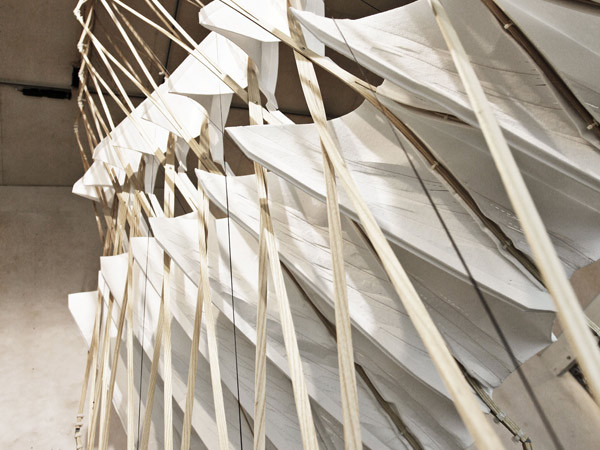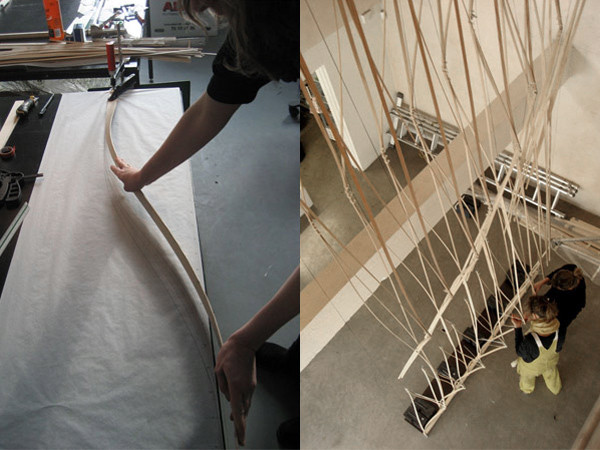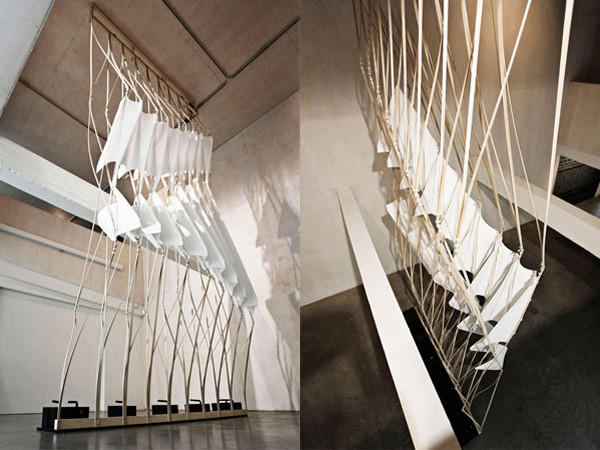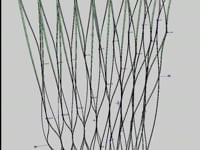
Thaw

A research project by CITA. The project is supported by a collaboration with Behnam Pourdeyhimi, NC State University, College of Textiles.
Thaw investigates how to use textile concepts of tension and friction for tectonic structures of architectural scale. As a wall membrane, Thaw explores the making of a woven structure made of ash slats braced together by steel joints. Where most architectural structures work through principles of compression, Thaw is a tensile structure. As such Thaw is soft: it moves the forces through its woven field though frictive interconnectivity.

Exploring the ideal of soft constructions, Thaw is animated. A pulley system draws Thaw in at a pulsing rhythm. The structure expands and contracts, inhales and exhales, resonating with its own material performance.
A second skin lines the structure. As a pleated manifold the membrane is tied to the surface responding to the movement and incorporating its rhythm.
Thaw is designed through a disposition of parametric interrelationships. Much like a textile pattern, Thaw is devised through the mapping of tensile relationships.
Thaw asks: 1) How can textile principles suggest new ways of thinking structure at architectural scale? 2) If structure becomes soft how can the integration of movement allow us to suggest ways of embedding responsiveness and adaptability? 3) How would it be to live in a soft space?

Thaw
Venue
Thaw was exhibited as part of the digital.material exhibition at the R.O.M Gallery for Art and Architecture , Oslo in May 2010.
Thanks
Michael Hensel , Oslo School of Architecture and Design and Toni Osterlund, Lunden Osterlund , for their inspiring constribution to the research seminar.
Photography
Anders Ingvartsen
















